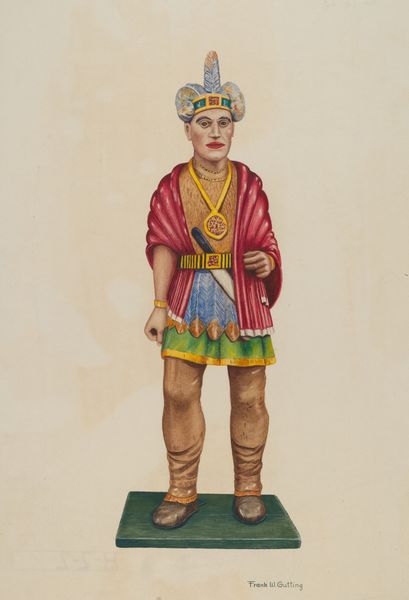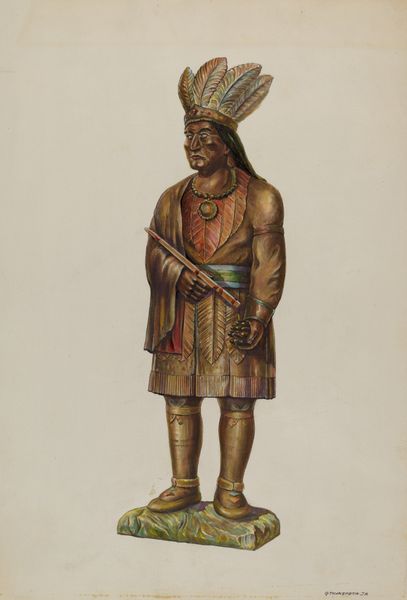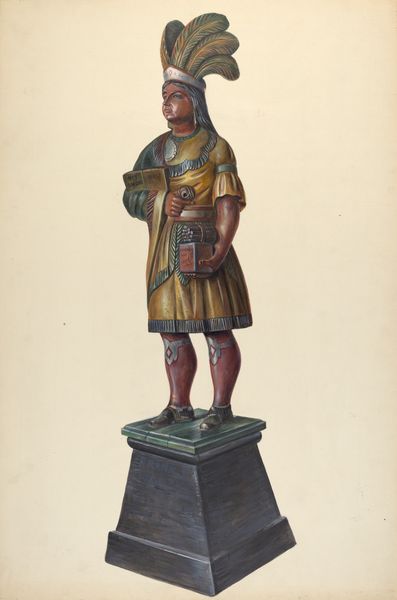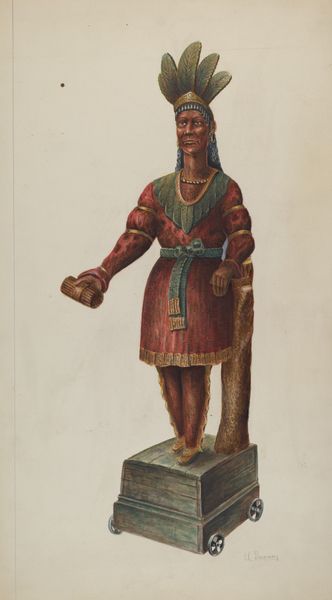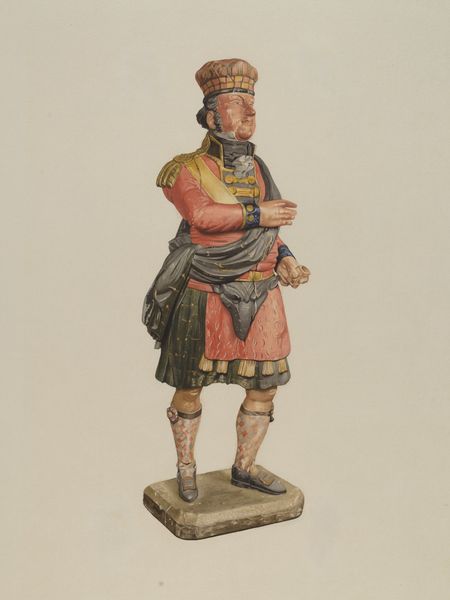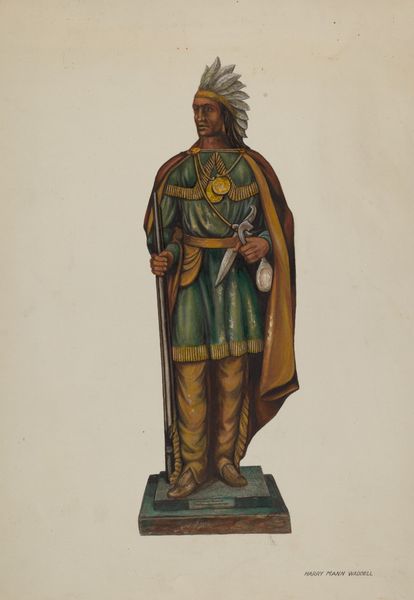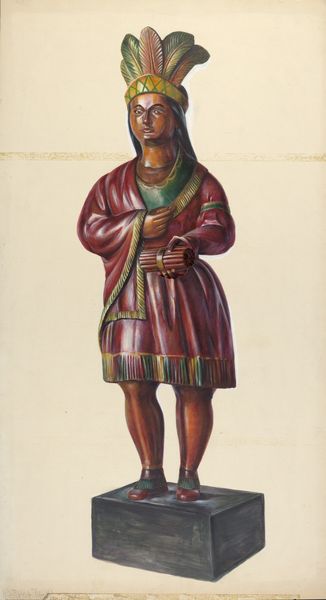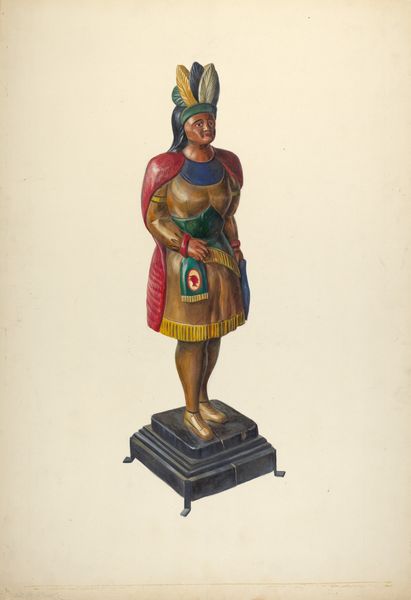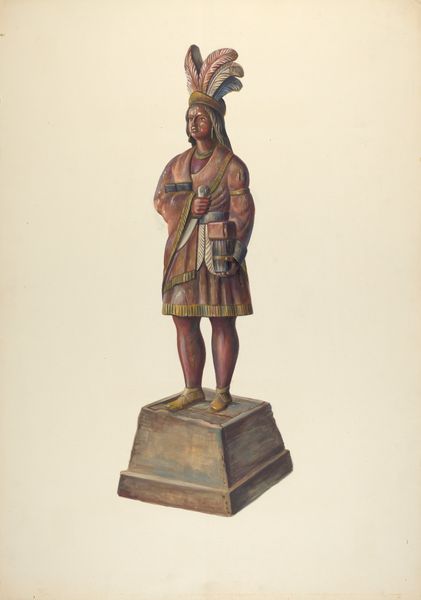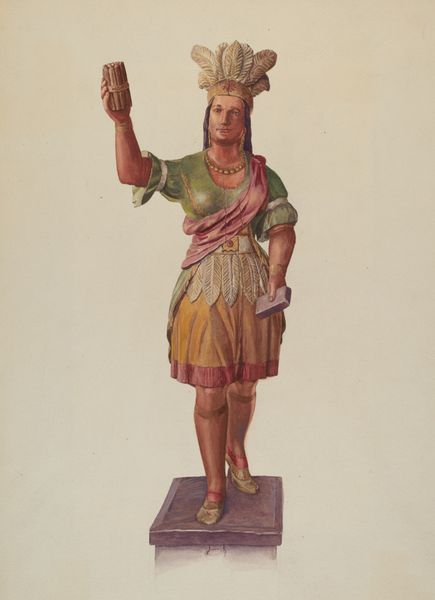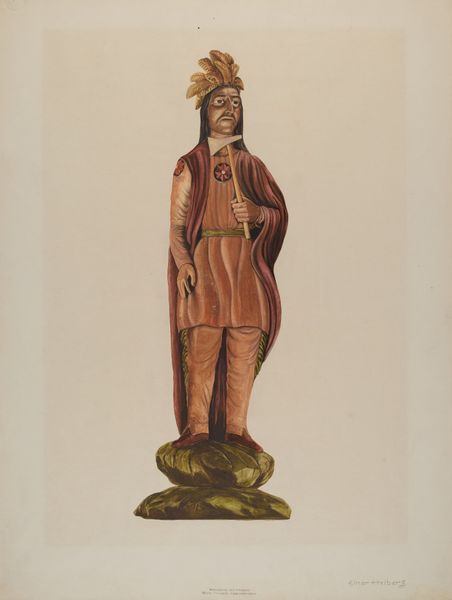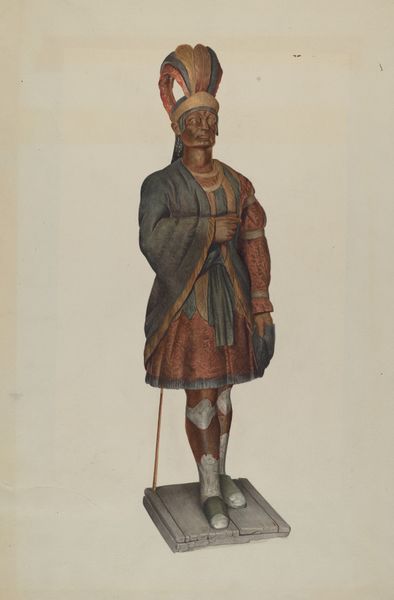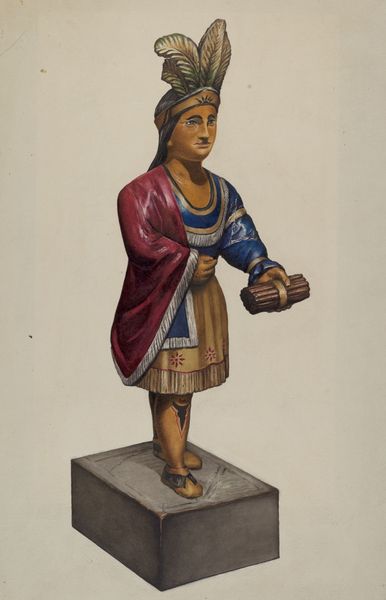
drawing, pencil
#
portrait
#
drawing
#
charcoal drawing
#
figuration
#
pencil
Dimensions: overall: 56 x 40.6 cm (22 1/16 x 16 in.) Original IAD Object: 57" high
Copyright: National Gallery of Art: CC0 1.0
Curator: Oh, there’s something undeniably powerful about this image, isn’t there? It almost radiates authority. Editor: Indeed. This piece is entitled "Cigar Store Indian" by Emil Hagen, created around 1939 using pencil and charcoal. What we see represented here is a once-common sight: a wooden sculpture placed outside tobacco shops to attract customers. Hagen captured it with striking detail in this drawing. Curator: There's such stillness and solemnity in those eyes, even in a drawing of what was, essentially, an advertisement. Makes you think, doesn't it? It feels like he’s looking *through* us, and through all the layers of history, right back to… I don't know, something fundamental. And look at the color work and those carefully drawn feathered details, they’re just stunning. Editor: It's interesting you note that solemnity. Cigar store Indians, while meant to be inviting, became incredibly complicated symbols, entangled in colonialism and the romanticized, often inaccurate, portrayals of indigenous people. It reveals the contradictions within American commercial imagery and broader societal attitudes of the time. Curator: Complicated indeed. The entire premise is obviously rooted in exploitation and the objectification of a culture, I get it. Still, look at it now, rendered with such unexpected dignity and detail decades later—as if salvaged. Hagen has given it this almost ethereal beauty, despite its origin. Don't you feel a sliver of redemption in his sensitive realism? Editor: Redemption is perhaps too strong a word. What I do appreciate is Hagen’s attention to the materiality, drawing our attention back to these now largely vanished objects, symbols really, of a particular historical narrative. This forces a confrontation, a questioning, doesn't it? About our own relationship to history and representation. Curator: It truly does. Editor: Hagen's image serves as a poignant reminder that the most unassuming artifact can trigger powerful dialogues, forcing us to reconcile past injustices and to reimagine the ways in which we interact with it all. Curator: I agree. Hagen might have never anticipated that a simple drawing could speak such volumes. Makes me wonder if there is such a thing as truly simple art after all.
Comments
No comments
Be the first to comment and join the conversation on the ultimate creative platform.
